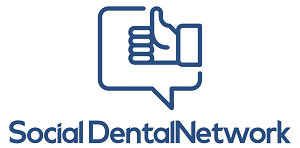Studies on EMG Finding from Pre- and Post- Acupuncture treatment in patients with dental malocclusion
Are you constantly experiencing neck pain, back pain and shoulder pain, headaches and migraines, pain in your jaw, locked jaw, pain your mouth that seems to constantly be moving around, clicking sounds in your jaw joints, chipped or worn out teeth, or even feeling that your ears are stuffed?
Then you may just be experiencing Temporomandibular joints disorder or TMJ disorder.
We understand and know this can be very painful to handle and live with; therefore measures must be taken such as surgery, injections of steroids, and physical therapy and so on.
But what if there could be a different way of handling the pain and stressors of TMJ disorder; a more traditional and alternative way?
One without the extreme procedures mentioned above? I’m talking about Acupuncture; the traditional Chinese medicine.
Here we have done case studies with people who suffered TMJ disorder and used Acupuncture as an alternative method to therapy for their TMJ disorder.
A study was conducted using an EMG which is the study of the electric activity of the muscles.
The purpose of studying an EMG is to evaluate and record the electrical activity produced by the skeletal muscles.
Masticatory muscles in patients with dental malocclusion remain in the state of continuous contractions as they chew or swallow saliva throughout the day.
According to Kherani, “Symptoms of headaches, TMJ pain, earache, neck and shoulder pain, and back pain in dental malocclusion patients are induced by chronic hyperactivity of the masticatory muscles”.
In a study from Ahmed Dental College, Adhkaristates that any deviation from a normal occlusion has a clear influence on muscle contraction.
There are many published studies that discuss the efficacy of the acupuncture treatment, but most studies depend on survey questionnaires that solely evaluate the improvement of subjective symptoms and fail to contain objective findings.
Biodi and Portuessi state, “It is difficult to access the efficacy of acupuncture.” Similarly, Melchart and his co-authors conclude in their study of chronic headaches that, “Patients reported clinically relevant improvement after receiving acupuncture, but the effect may be due to largely potent unspecific needling and placebo effect.”
Not all studies, however, are critical of such acupuncture treatment.
Xiaouri Zhang mentions in his interview and analysis of clinical trial reports that, “Acupuncture analgesia works better than a placebo effect for most kind of pain, and its effectiveness rate in the treatment of chronic pain is comparable with that of morphine.”
Tanaka in his study concludes that acupuncture is a useful method for decreasing functional muscle distortion and improving synergistic muscle coordination.
The purpose of this study is to show EMG at rest and occlusion before acupuncture treatment and, ultimately, to show how the electrical activity is decreased after acupuncture treatment.
The K-7 computer-aided occlusal evaluation system was used to evaluate and record the electrical activity of patients who complain of chronic migraine headaches, neck and shoulder pain, earache, TMJ pain and back pain due to dental malocclusion.
A case study, one of our patients, is a 64-year-old female who reported to have severe TMJ pain that had progressively worsened over the last 19 years. TMJ clicking was palpated with greater severity on the patients left side.
The at-rest EMG reading was within normal limits (1.6uV) for both sides. Light occlusion of the back teeth resulted in an increase of activity to 7.1uV on the left side and 3.1uv on the right side.
This increase was more pronounced on the left side as expected from the initial examination. Notably the patient produced a consistent response to acupuncture treatment on the contralateral side.
Application of acupuncture on the right side resulted in a significant decrease of EMG readings from the left temporalis, from7.1uV to 2.1uV. At the same time, a slight increase in EMG activity on the right side was also observed.
This increase may have resulted from the balancing and relaxation of the contralateral side.
When acupuncture was subsequently applied on the left side, however, the right side temporalis anterior started to respond to treatment and the EMG reading decreased from 3.6uV to 3.4uV.
Another case study was a 60-year-old-female patient who received TMJ treatment to correct dental malocclusion within the last 6 months.
The main symptoms included chronic neck and upper back pain due to the dental malocclusion.
The patient had very quiet electrical activity, o.8uV on the left temporalis anterior and 1.0uV on the right temporalis anterior muscle.
This is a good indication that the patient’s masticatory muscles were relaxed at rest as a result of the TMJ treatment.
Light occlusion of the patient’s back teeth resulted in increases of EMG activity. The left side increased to 2.8uV and the right side increased to 1.4uV.
Though the increases in EMG activity were less pronounced in this particular patient, the comparatively lower level of EMG activity may be explained by the patient’s prior TMJ treatment.
Despite the relatively low level of EMG activity; her results still show notable decrease in EMG activity, from1.9uV to1.0uV.
This indicates the efficacy of acupuncture treatment even in individuals who may be experiencing only slight pain from TMJ related issues.
CONCLUSION
These case studies suggest three conclusions.
First, the studies show that EMG activity of temporalis anterior muscles can be decreased by the acupuncture treatment using acupuncture points of SJ 3, GB 34, LI 4.
Second, EMG results from pre- and post- acupuncture treatment strongly confirm the effectiveness of the acupuncture treatment.
Third, the studies show that symptoms originating from the temporalis anterior muscles in dental malocclusion patients such as migraine headache, neck and shoulder pain, TMJ pain, back pain, and earache can be treated by acupuncture treatment.
This post was originally published on the dental health blog of Dr. Andrea K. Choi, and has been republished here with permission.
 Dr. Andrea K. Choi graduated from Loma Linda School of Dentistry in 1994. Just two years later, she founded and maintained a very successful private practice in the city of Perris. She opened a practice in Rancho Cucamonga in 2010 and in Newport in 2011. She is a member of the American Dental Association (ADA), California Dental Association and today, she continues to deliver the best in dental care to you and your entire family.
Dr. Andrea K. Choi graduated from Loma Linda School of Dentistry in 1994. Just two years later, she founded and maintained a very successful private practice in the city of Perris. She opened a practice in Rancho Cucamonga in 2010 and in Newport in 2011. She is a member of the American Dental Association (ADA), California Dental Association and today, she continues to deliver the best in dental care to you and your entire family.
Dr. Choi also holds a Master’s Degree in Acupuncture and Oriental medicine which qualifies her to provide holistic and alternative care for her patients.


